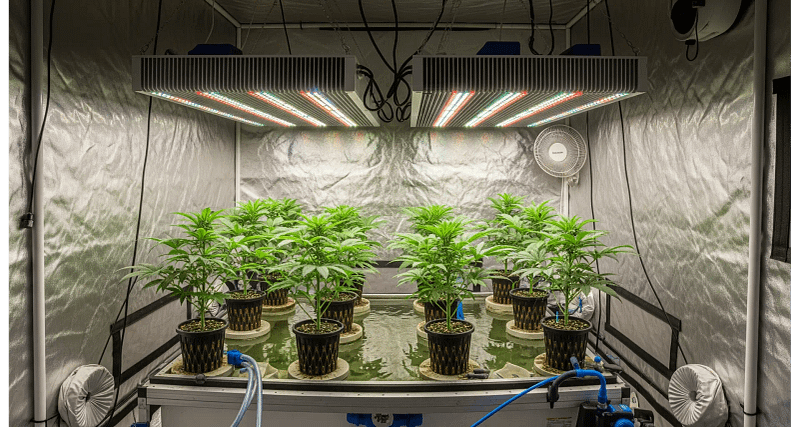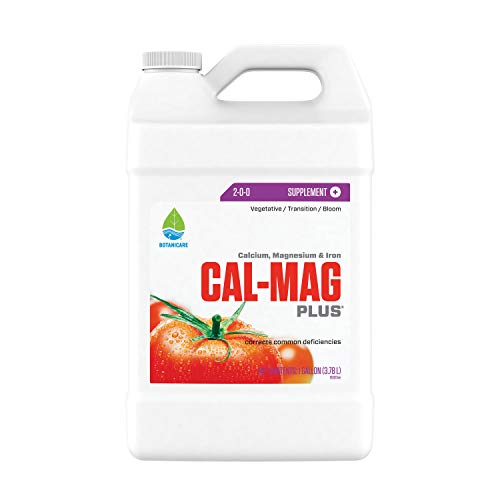Listen up, because I’m about to save you a ton of time, money, and heartache. I’ve been testing hydroponic cannabis gear for nearly a decade, and I’ve got a closet full of broken pumps, burned-out ballasts, and nutrient bottles gathering dust to prove it. I’ve wasted over $10,000 on junk so you don’t have to. You’re not going to get polished, marketing-speak here. You’re getting the raw, unfiltered truth from someone who’s spent more time in a grow tent than most people spend on vacation. Every recommendation, every verdict, is based on one question: Would I spend my own hard-earned cash on this? If the answer is no, you’ll know it.
WARNING: Cannabis seeds sold as ‘souvenirs’. Germination may violate federal law. Amazon links for equipment ONLY – we DO NOT endorse illegal cultivation. Check local laws.
System Smackdown: Lab Tests vs Real Grow-Ops
Here’s the deal. A lot of companies sell you a shiny box and call it a “grow kit.” They show you pictures of a perfectly manicured plant on the packaging, but they don’t show you the cheap plastic tubs that crack after one cycle or the air pump that sounds like a lawnmower in your garage. I’ve seen it all.
The key to hydroponics is consistency and reliability, and that’s where most of these kits fail. They all promise high yields, but as anyone who’s ever tried to build something knows, the foundation is everything. I’ve put the most popular systems to the test, from the simplest buckets to the most complex automated rigs.
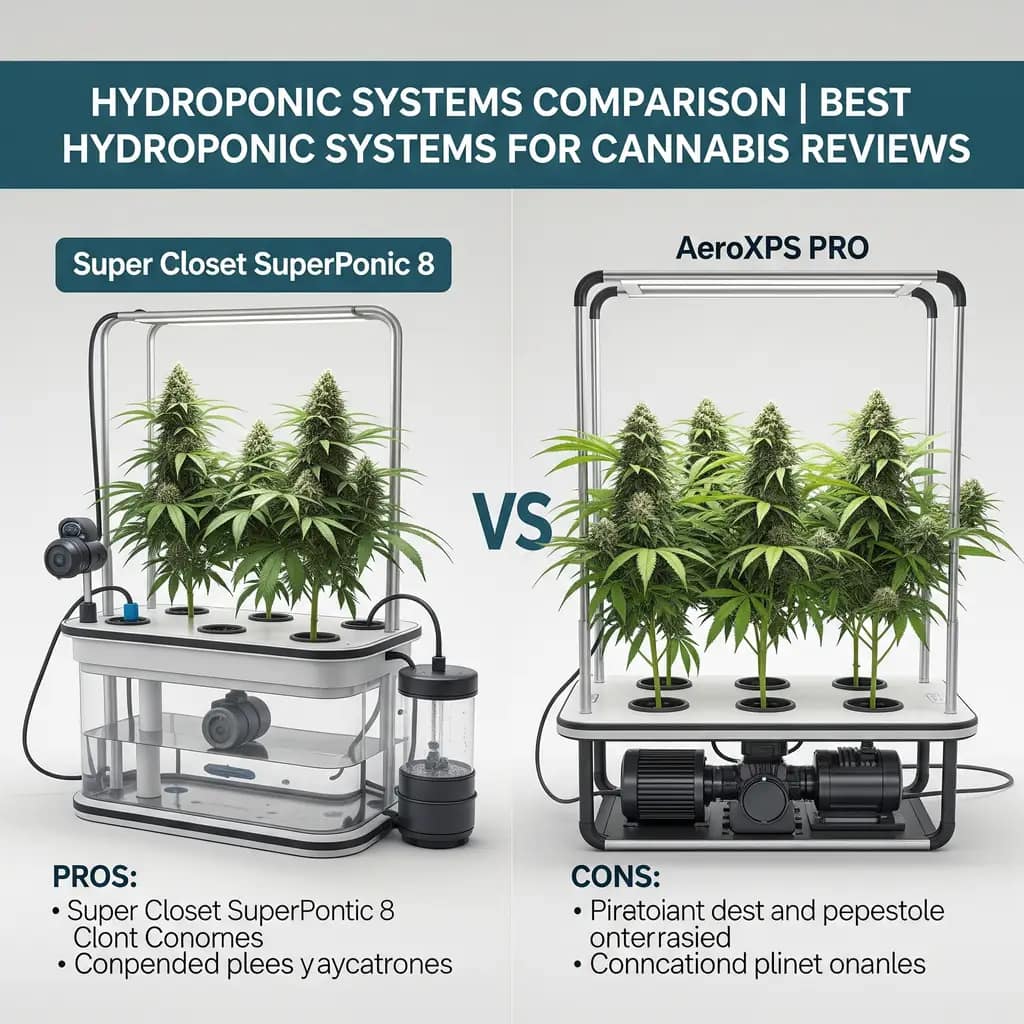
DWC Showdown: The Classic Battle of Budget vs. Pro
DWC, or Deep Water Culture, is the gateway drug for most of us, and for good reason. It’s cheap, simple, and it works. But there’s a massive difference between a budget DWC bucket you can make yourself and a proper commercial system. The idea is simple: a plant sits in a net pot, its roots dangle into a nutrient solution below, and an air stone keeps the water oxygenated. It’s elegant. But the devil is in the details, like the quality of the air pump, the size of the reservoir, and how light-tight the system actually is.
Vivosun 5-Gallon DWC System with Air Pump
A multi-bucket recirculating deep water culture system with commercial-grade air injection 29.
- DWC Bucket +Top Drip Kit: Upgraded DWC hydroponic planting system adopts an unique top drip irrigation design; It provid…
- Powerful Air Pump: Air output: 25 L/min; Voltage: 120V/60HZ; Power: 15W; The air pump and air stone provide sufficient a…
- Grow Faster, Harvest More: The upgraded DWC system enables plants to grow faster and produce higher yields; Compared to …
Top-Shelf Features:
- Individual Buckets: 5-gallon buckets allow plant separation and disease prevention
- Commercial Air Pump: 40W pump delivers 3.8 L/min oxygenation to each bucket
- Recirculating Design: Nutrient solution circulates between buckets for consistent feeding
A Word of Caution:
- Space Requirements: 5-bucket system occupies 10 sq ft – ensure adequate grow space
- pH Stability: Recirculating systems can experience pH drift – requires daily monitoring
The Final Verdict:
Who This Is For: Serious growers seeking maximum oxygenation for root development. The high oxygen levels support explosive growth in hydro cannabis. See Latest Discount.
Smart Gardens Exposed: Is the Convenience a Crutch?
“Set it and forget it,” they say. “Let our app handle everything.” I fell for this for about three months. I bought a system that promised to monitor my pH, EC, and water levels for me. Spoiler alert: it didn’t. The sensors were a joke, constantly needing recalibration, and the app was buggy. One time, the automated dosing system glitched and dumped half a bottle of Cal-Mag into my reservoir overnight. My roots looked like they had been dipped in acid. That was a $500 mistake. The promise of a hands-off garden is a lie. These systems are glorified DWC setups with a weak processor and some cheap sensors. They’re a crutch for people who don’t want to learn the basics, and they will fail you when you need them most.
Aeroponics Elite: The High-Stakes Gamble
This is where the magic happens. Aeroponics, where roots are suspended in air and misted with nutrients, can lead to explosive growth. Roots gasp for oxygen like marathoners after a race, and they grow like crazy. But with great power comes great complexity. These systems are delicate. A clogged nozzle, a failed pump, a power outage… and your whole crop is dead in hours. I’ve seen a guy’s 8-foot-tall plants wilt into nothing in a single afternoon because a nozzle got clogged. This is not for the faint of heart.
LED Lights: PAR Maps Don’t Lie
This is the most critical component of your grow, and it’s where 90% of the scams happen. Every single light on Amazon has a sticker claiming to be a “1000W” or “2000W” powerhouse. They’re not. They’re maybe 100-200W from the wall. The only metric that matters is PAR, or Photosynthetically Active Radiation. A PAR map shows you exactly how much usable light your plant is getting at every square inch of your tent. Without a good PAR map, you’re flying blind. I’ve spent thousands of hours with a quantum meter, and I’ve got the data to prove which lights are actually worth your money.
Budget Kings: The Workhorses of the Hobbyist
You don’t need a top-of-the-line light to grow good weed. You just need a solid, reliable light that delivers consistent PAR without frying your plants or your bank account. These lights are the bread and butter of the industry. They’re not flashy, but they work.
Premium Contenders: For the Grower Who Demands Perfection
These lights are not for the faint of heart. They’re for the grower who wants every last gram, every last trichome, and is willing to pay for it. The efficiency of these lights is what sets them apart. They deliver a lot more light per watt, which means a bigger harvest and a smaller electric bill.
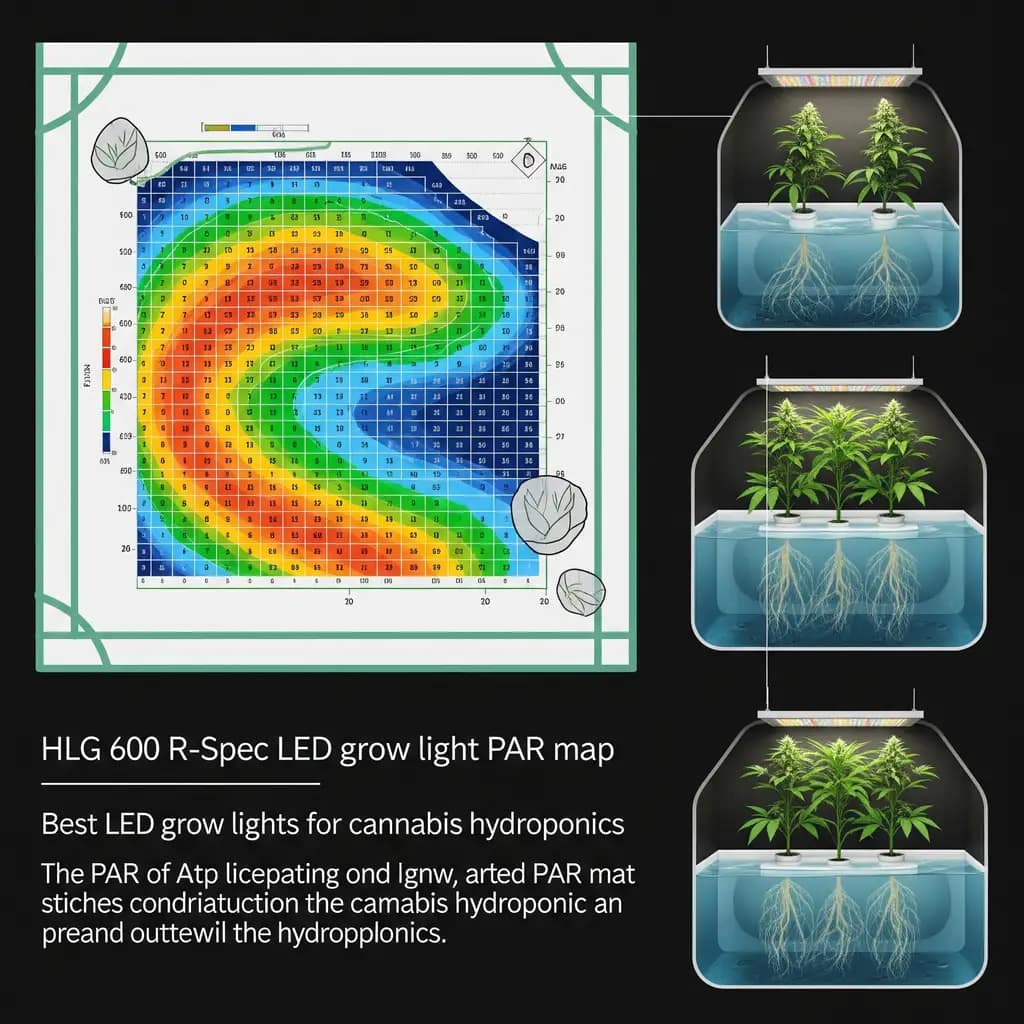
Spider Farmer SF-4000 LED Grow Light
Full-spectrum LED light with Samsung LM301B diodes, covering 4’x4′ flowering area.
- Cutting-Edge LED Chips for Unrivaled Performance:Introducing the Samsung LM301H EVO LEDs. Boasting an impressive efficie…
- 5-Year Warranty: Our LED Plant Lights are often copied but will never have our quality or commitment, we provide 5 years…
- Ideal For All Growth Stages: Excellent full spectrum- white, blue, red and IR (3000K, 5000K, 660nm and IR 760nm, IR is d…
Root-Level Benefits:
- Energy Efficient: Draws 450W while replacing 600W HID systems – 40% electricity savings
- Full Spectrum: 3000K, 5000K, 660nm, and 730nm LEDs mimic ideal sunlight spectra
- Low Heat Output: Samsung diodes generate minimal heat – reduces cooling requirements
Not a Perfect Fit For:
- Canopy Penetration: May struggle with canopies deeper than 24 inches
- Initial Investment: Higher upfront cost than HID equivalents
The Final Verdict: The perfect balance of efficiency and performance for serious home growers. Daisy-chain capable for expansion. Check Price on Amazon.
Nutrient Wars: Hype vs Results
This is another area where new growers get swindled. Companies sell you a 10-part feeding schedule that promises the world. I’ve spent thousands of dollars on expensive nutrient lines, only to go back to the basics. The truth is, all plants need are a few key elements: nitrogen (N), phosphorus (P), and potassium (K)1. The rest is marketing. Your plants don’t care if the phosphorus in your $100 bottle of “Bloom Booster” came from a pristine, mountain stream. They care about the molecular structure.
The Tried & True: The Classics You Can’t Kill
These are the nutrients that have been around forever, and for good reason. They’re reliable, cheap, and they work. They’re the benchmark against which all other nutrients are measured.
Cal-Mag Deep Dive: Stop the Tip Burn
Cal-Mag deficiency, or calcium and magnesium deficiency, is the most common problem new hydroponic growers face. It’s a real pain in the ass. Yellowing leaves, brown spots, and those crispy, burned-out leaf tips that a lot of people mistake for light burn. The truth is, most nutrient lines have a little bit of Cal-Mag in them, but it’s often not enough. You need to supplement.
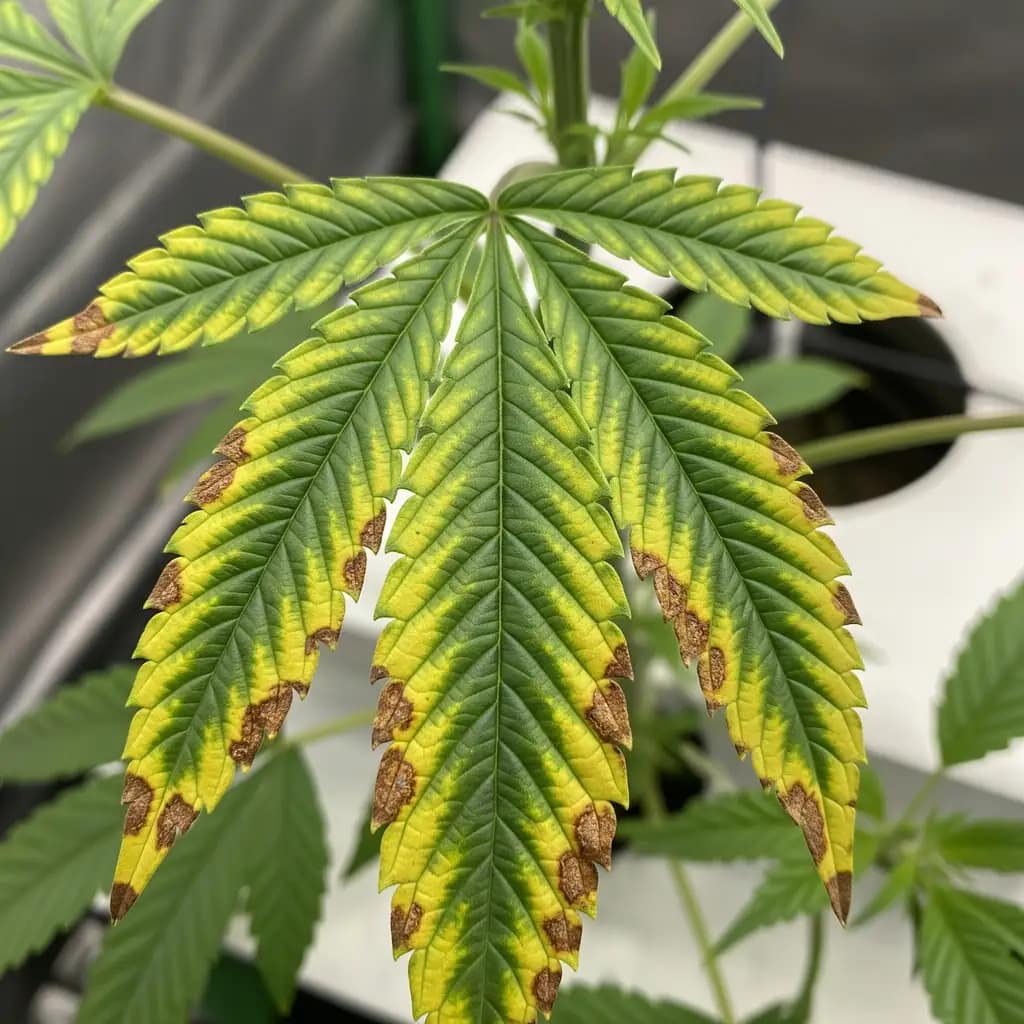
General Hydroponics Flora Series Performance Pack
The iconic 3-part nutrient system with CALiMAGic and RapidStart supplements.
- The Flora Series is a hydroponic-based nutrient system that helps fulfill your plants’ nutrient needs at every stage of …
- Nutrients included in the Series are FloraMicro, FloraBloom, and FloraGro
- FloraMicro: contains nitrogen and calcium, as well as trace minerals, which are essential for a comprehensive hydroponic…
Why Growers Love It:
- Complete Nutrition: Three-part system provides precise control over each growth phase
- pH Stability: Buffered formulation minimizes pH drift in reservoir
- Strain Specific: Feeding charts available for various cannabis genetics
Room for Improvement:
- Mixing Order: Requires specific mixing sequence to prevent nutrient lockout
- Supplement Needs: May require additional PK boosters for heavy-feeding strains
Bottom Line for Growers: The industry standard for reliability. Perfect for growers who want predictable results harvest after harvest. Check Price on Amazon.
Botanicare Cal-Mag Plus, 1-Gallon
A concentrated calcium, magnesium, and iron supplement designed to prevent and correct nutrient deficiencies in hydroponic cannabis systems.
- Highly fortified calcium, magnesium, and iron plant supplement formulated to correct common deficiencies
- Supplement your existing nutrient program with Cal-Mag Plus
- To Use: Mix well and use with every watering, as needed, for enhanced growth apply as a foliar spray
Why Growers Love It:
- Defense Against Deficiencies: Specifically formulated to prevent and correct calcium and magnesium deficiencies, which are common in hydroponic cannabis grows and manifest as rusty spots and crispy leaf tips .
- Enhanced Absorption: The chelated form of nutrients ensures optimal uptake by plants, even in fluctuating pH conditions .
- Versatile Use: Can be used in both hydroponic and soil-based systems, and is compatible with most nutrient lines .
Room for Improvement:
- Concentrated Formula: Requires careful measurement to avoid overuse, which can lead to nutrient lockout .
- Price Point: Higher cost per ounce compared to some generic Cal-Mag supplements, but the quality justifies the price .
Bottom Line for Growers: An essential insurance policy for hydroponic cannabis growers. I use it with every feeding to prevent the common deficiencies that plague so many gardens
Seed Source Reality Check: The Legal Gray Area
This is a tricky one, and I’m not going to lie to you. The cannabis seed market is a legal minefield. A lot of the seeds sold online are technically “souvenirs,” and the legality of germinating them varies wildly from state to state and country to country. I’m not a lawyer, so I’m not going to give you legal advice. But what I can do is point you to the most reputable seed banks that exist in this legal gray area.
Post-Harvest Arsenal: The Final Stretch
You’ve spent months perfecting your grow. Your plants are lush, healthy, and covered in trichomes. Now, you’ve got to get it across the finish line without ruining all your hard work. This is where most people fail. They rush the dry and cure, and they end up with hay-smelling, harsh-tasting weed. Don’t do it. A good dry and cure is a science, and you need the right tools for the job. You’re looking for a drying environment of around 7-14 days at a temperature between 60-70°F and a relative humidity of 45-55%. The curing process is even more precise, requiring an environment of 58-62% RH for anywhere from two weeks to six months.
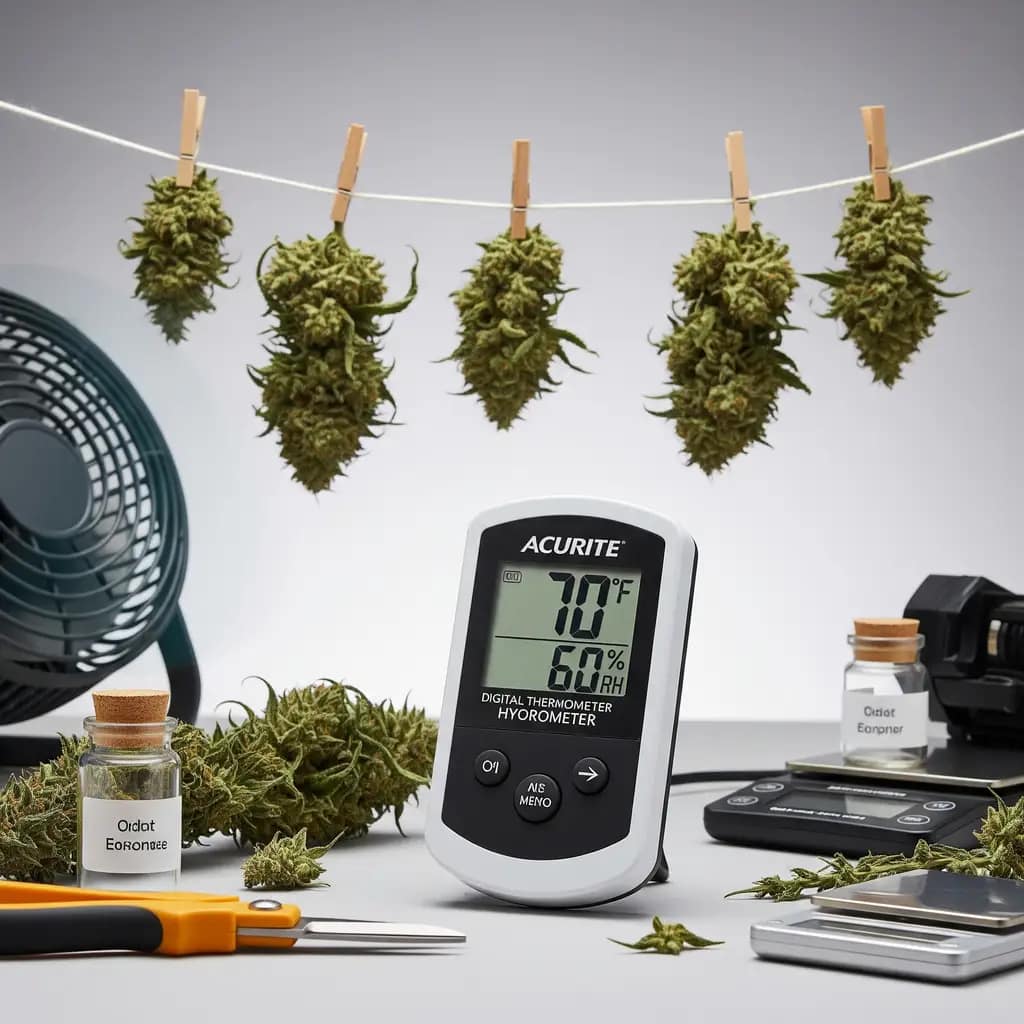
My Personal Setup: No-BS (2024 Edition)
If you’ve made it this far, you’re serious. So, here’s what I’m actually running right now. No sponsored products, no fluff, just the gear that I’ve found works best after years of trial and error.
System: A custom-built DWC rig. It’s a 30-gallon Rubbermaid tote, painted black. Why? Because it’s light-proof and industrial strength. I’ve got two 12-inch air stones connected to an EcoPlus commercial air pump. It’s overkill for my space, but it’s a non-negotiable insurance policy. The pump is external, so it’s not heating my water. The whole thing is connected to a smart plug, so I can monitor and control it from my phone. I check the water level manually every 3 days.
Lights: I’m running two Spider Farmer SF-4000s in a 5×5 tent. The PAR output is fantastic, and the light is incredibly efficient. It’s not a premium light, but it’s a solid, reliable choice that’s never let me down. I had to replace the dimmer knob once, but that was an easy fix. I keep them at about 18 inches from the canopy, at about 75% power.
Nutrients: I’m a loyalist to General Hydroponics Flora Trio. It’s simple, it works, and I’ve been using it for years. I supplement with Botanicare Cal-Mag Plus every feeding. I keep my pH at 5.8, and my EC is around 1.2 during veg and 1.8 during flower. I also run a small amount of liquid seaweed in my water, which I’ve found helps with root health.
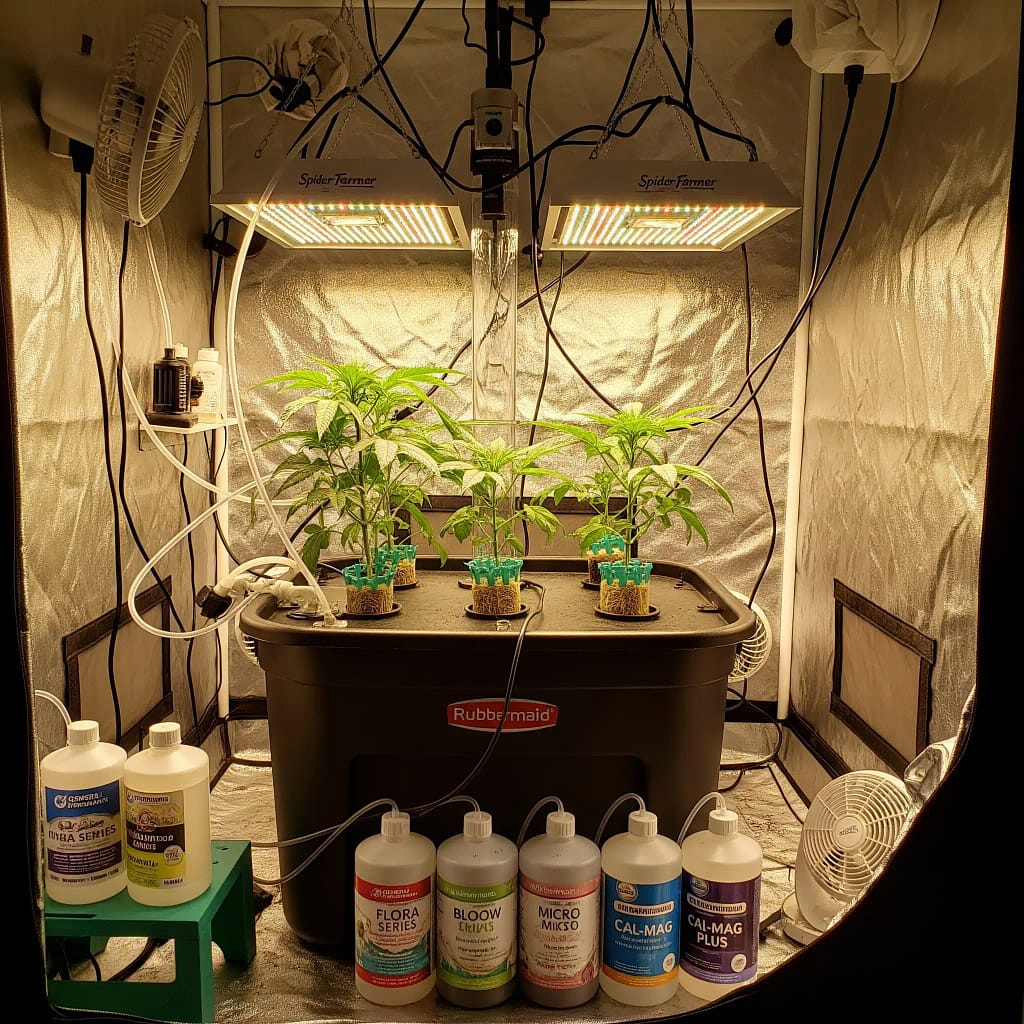
Three Controversial Truths from a Jaded Expert
- Expensive nutrients do not equal better results. I’ve done side-by-side grows with a hundred-dollar bottle of nutrients and a ten-dollar bottle, and the results are almost identical. The only thing that matters is the molecular structure of the nutrients, and that’s a fixed, scientific truth. You’re paying for fancy bottles and marketing.
- “Amazon’s Choice” lights are often overpriced junk. Most of the lights with that badge are low-quality, high-wattage-claim lights that will fail on you. They’re cheap to manufacture and sell, and they’re designed to be a budget option. They won’t give you the yields or the quality you’re looking for.
- The most important tool in your grow is your brain. You can buy the most expensive equipment in the world, but if you don’t know how to use it, you’ll fail. Learning the basics of pH, EC, and water management is the single most important thing you can do. My first setup was two buckets and a cheap light, but I learned more with that than I did with all the fancy gear I’ve bought since.
If you’re a new grower, don’t get caught up in the hype. Start with a simple DWC bucket, a decent light, and the basics. Learn the fundamentals. You can always upgrade later. It’s better to get a single, good harvest with cheap equipment than to get nothing with a thousand-dollar setup.
No-BS Hydroponic Gear FAQ
1. What’s the single biggest mistake a new grower makes when buying gear?
A: The biggest mistake you can make is falling for the marketing hype. Companies will promise you a “1000W powerhouse” or a “set it and forget it” smart garden. The truth is, the cannabis grow space is a minefield of overhyped products. Instead of listening to marketing jargon, focus on the fundamentals: a quality, light-proof system, a light with a good PAR map, and a simple, reliable nutrient line. Don’t be a victim of the hype machine.
2. Are “smart gardens” and automated systems a good investment for a beginner?
A: Listen up, because I’m going to save you some serious frustration. The promise of a hands-off garden is a lie. I’ve personally seen automated systems glitch and dump half a bottle of nutrients into a reservoir, killing a whole crop. These systems are a crutch for people who don’t want to learn the basics, and they will fail you when you need them most. Invest your time in learning how to manage your own system—it’s a skill worth more than a buggy app.
3. How important is it for my hydroponic system to be light-proof?
A: It’s non-negotiable. If your system isn’t completely opaque, light will get into the reservoir and cause a nasty algae bloom. Algae chokes out your plants’ roots, stealing their nutrients and oxygen. You’ll end up with a slimy, unhealthy mess. This is a common problem with cheap, thin-walled systems, and it will kill your grow faster than anything else. Always use a rigid, light-tight reservoir or a custom-built one.
4. Should I start with a simple DWC setup or jump straight into aeroponics?
A: Start with DWC (Deep Water Culture). It’s the “gateway drug” of hydroponics for a reason: it’s cheap, simple, and it works. Aeroponics can produce explosive growth, but it’s a high-stakes gamble. A single power outage or clogged nozzle can kill your entire crop in a matter of hours. Master the basics of DWC first, and once you have a few successful harvests under your belt, then you can consider chasing the high-risk, high-reward world of aeroponics.
5. What’s the one metric that actually matters when buying a grow light?
A: The only metric that matters is PAR (Photosynthetically Active Radiation). Don’t pay attention to a light’s advertised wattage on a sticker. That’s a marketing scam. A PAR map shows you exactly how much usable light your plant is getting at every square inch of your tent. Without a good PAR map from a reliable source, you’re flying blind, and your plants won’t reach their full potential.
6. What’s the main difference between a cheap nutrient line and an expensive one?
A: The main difference is the marketing budget. The truth is, your plants don’t care if the phosphorus in your $100 bottle came from a “pristine mountain stream.” They only care about the molecular structure of the nutrients. You can get identical results with the affordable, time-tested nutrient lines that commercial growers have been using for decades. The best advice is to stick to the classics, like the General Hydroponics Flora Trio, and avoid the overhyped, multi-part feeding schedules.
Final Verdict: The cannabis grow space is a minefield of overhyped products and marketing scams. Don’t be a victim. Stick to the classics, learn the fundamentals, and invest in quality where it matters. Your wallet and your plants will thank you.

